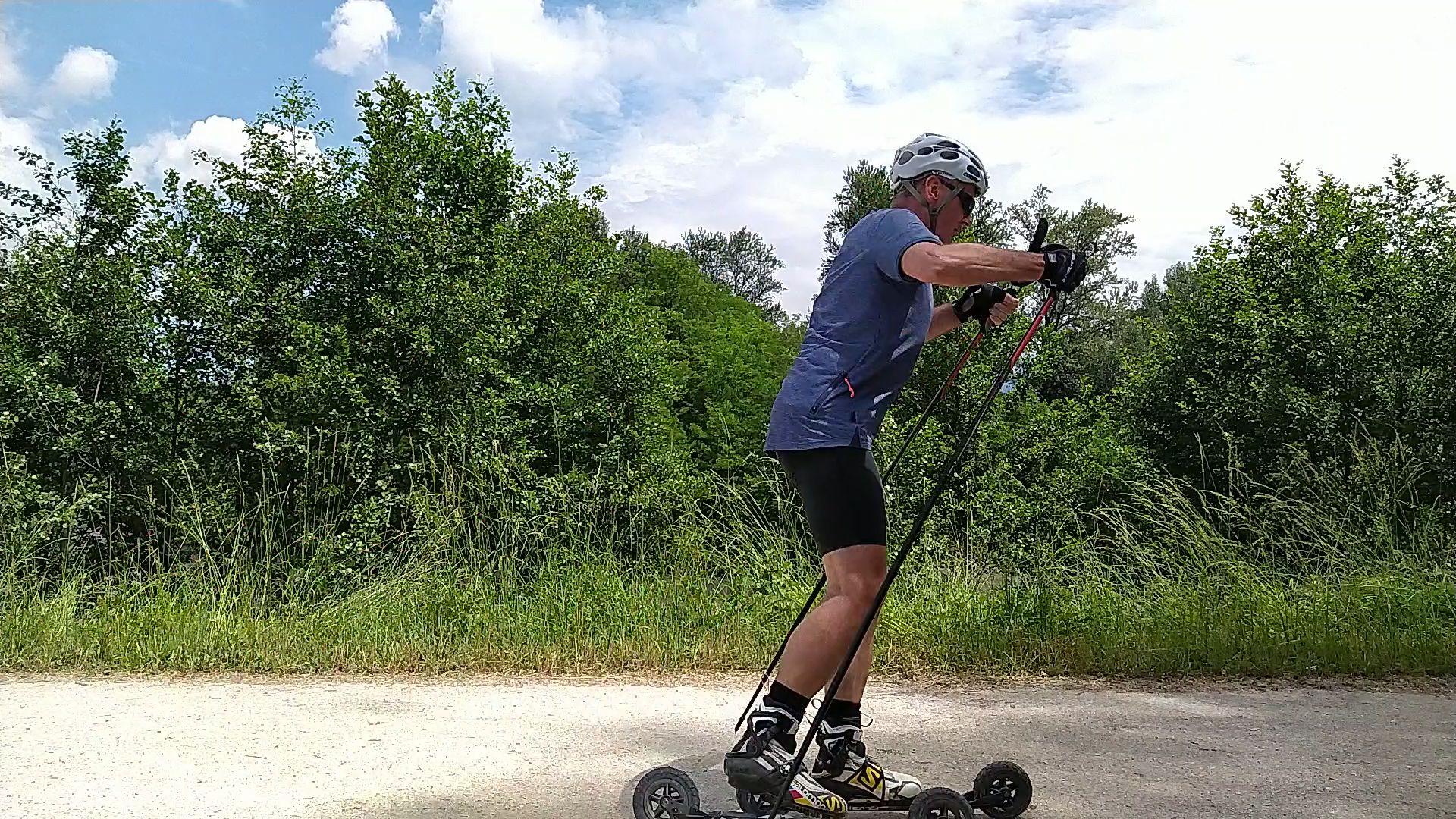
Cross skating is a form of rollerskiing that replaces hard Urethane wheels with inflatable tires and rims. These are typically 150mm (6 inches) or 200mm (8 inches) in diameter with a cross section of 30 to 50 mm (1 1/4 to 2 inches). The advantage is that inflatable wheels don't need smooth asphalt surfaces so opening up a whole variety of terrain.
The smaller 150 mm wheels have to be inflated to relatively high pressures (6-7 bar) and work well on good gravel or hard dirt surfaces but can still get blocked by soft ground, large stones and tree roots. 200 mm wheels, running at lower pressures (4 bar) open up a wider variety of surfaces at the expense of more weight and resistance on road.
The following major brands of cross skates are available
Skike (ski-bike) have almost become synonymous with the sport and their name is frequently used to describe this type of ski.
Cross skates can be equipped with nordic ski bindings and can be used with cross country ski boots or they are equipped with their own binding system which take street shoes. This opens the sport up to people who are not winter cross country skiers and are just looking for another summer activity. It makes running a hire fleet easier as there is no need to stock a range of boots.

Cross skates can be equipped with non-return bearings for classic technique. The round profile of the pneumatic tires make them less stable for this kind of activity, at least for prolonged use. However it can be practical for traversing steep or technical terrain. For flat or slightly rolling terrain skate technique is often preferred. Some of the models can be fitted with a brake, either on one or both feet. This enables quite steep and long hills to be descended, tracks, ski pistes - even alpine Cols (for example: l'Alpe d'Huez, 1000 meters at 10%).
In terms of technique it is exactly the same as you would use on snow or with rollerskis. The pneumatic wheels soak up road vibrations making the sport much more comfortable than rollerskiing. Obstacles such as pot holes or raised pavement edges when crossing roads become much less of a problem. The skis are more stable. Speeds are slightly slower on tarmac and the whole feeling approaches that of skiing on snow when compared with rollerskiing letting you concentrate on technique without the fear that some obstacle will send you crashing to the ground. You can also tackle grassy slopes letting you practise a bit of downhill technique and cornering in relatively safety. Without fitting brakes slowing down is less efficient compared to rollerskis - principally by snow ploughing and the inflatable tires can suffer punctures, carry a spare wheel if heading far from home as the small inner tubes are difficult to change.
As ever protection, helmet and glasses should be worn.